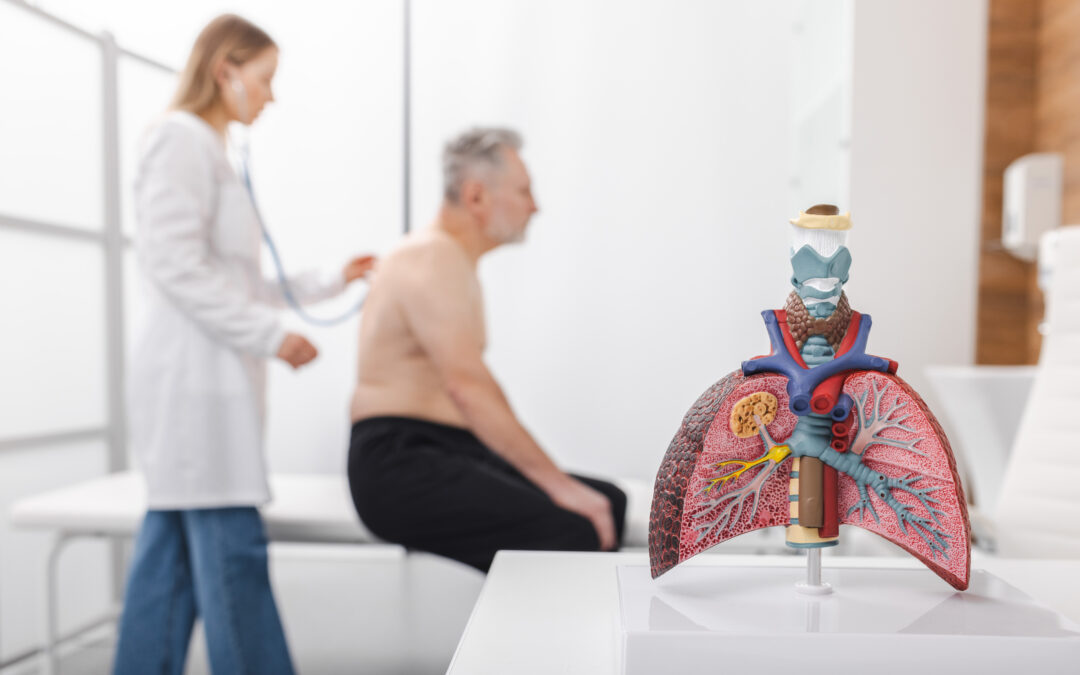Broken Heart Syndrome

What is “broken heart syndrome?” The medical term for broken heart syndrome is Takotsubo Cardiomyopathy. It was first described in 1990 by a Japanese physician, Dr. Hikaru Sato. He described a series of patients who presented as if they were having a heart attack (myocardial infarction, or “MI”), but had significant differences.
The left ventricle is the largest and strongest of the four heart chambers. Think of it as being shaped like a football cut in half, with the pointed end (apex) directed downwards and the upper part (base) oriented in the direction of the head. Normally, the left ventricle receives blood oxygenated by the lungs, and contracts inward from all directions, ejecting this oxygen rich blood to the rest of the body.
In a heart attack, one of the three coronary arteries is blocked, so the “wall” that is supplied by that vessel does not move, and this abnormality is visible on a heart ultrasound, or as part of the heart catheterization procedure. One might think of it as analogous to having your leg, “fall asleep,” after sitting on it and impeding the circulation, and then having a bit of trouble walking when getting up.
In Takotsubo cardiomyopathy, not only is there no coronary obstruction, but the only part of the ventricle that contracts normally is the “base” (the part towards the head), while the middle and lower portions of our cut “football” balloon out instead of contracting in. So, the ventricle looks like the octopus trap, which is shaped like the animal’s head, giving them a cozy place to hide from predators.
So, we have patient with all the symptoms and EKG findings of a heart attack with no blocked arteries and an unusual shape of the ventricle when it contracts. This happens in about 1-3% of patients presenting with features of a major heart attack and is typically more common in women after menopause but certainly can occur in men.
Is it caused by emotional distress? In two thirds of patients a clear significant emotional or physical stress can be identified as the precipitant. The emotional precipitants range from events such as an argument to the loss of a loved one, a major financial strain, or even experiencing major environmental events, such as a hurricane or earthquake. There is even evidence that Takotsubo was more common during the peak of the pandemic. Physical precipitants include things like an automobile accident, sudden illness, or even a severe asthma attack.
What are the underlying causes? There are a number of theories, and ultimately it could be a combination of these, or other factors. One is the release of catecholamines (such as adrenaline) during severe stress. These stimulate certain receptors in the heart and are evolutionarily present to help you respond to a sudden threat, like being chased by a lion. These are called beta receptors and one theory postulates that their distribution in the ventricle occurs more in the areas where the ballooning is seen in Takotsubo. Signals from the brain can also lead to catecholamine release, which makes sense in the emotional precipitants. Downstream effects can include spasm of small vessels in the heart, which can have a different distribution than the larger vessels blocked in true heart attacks. The higher incidence in post-menopausal women suggest a hormonal component.
Can Takotsubo Cardiomyopathy be treated? This abnormal ballooning can lead to heart failure, which now has very effective medications that can also be used to treat Takotsubo. These include ACE inhibitors, beta blockers, diuretics, and other agents. Patients may even be in shock, and require treatments used in other forms of cardiogenic shock. And if the heart is too weak, sometimes anticoagulants are needed to prevent the formation of a clot in the chamber of the left ventricle, because blood is not moving as vigorously as normal.
Is there any way to prevent it? There isn’t a particular way to prevent Takotsubo, in part because it is so uncommon, and there isn’t a clear way to identify those at risk. While the mortality rate can be as high as 4% during hospitalization, the good news is that the majority of patients typically normalize their heart function by a month or so after onset.
Author: Andrew Mackie, PA
Associate Clinical Professor, Northeastern PA Program.








